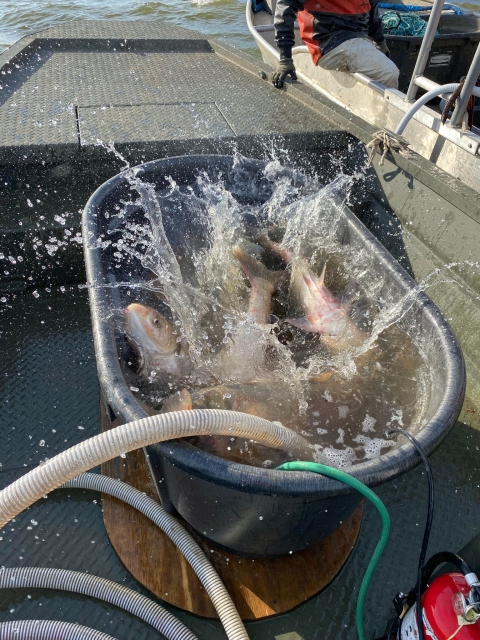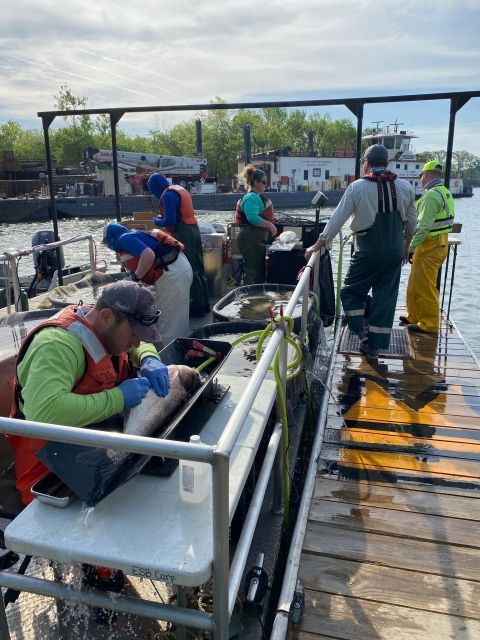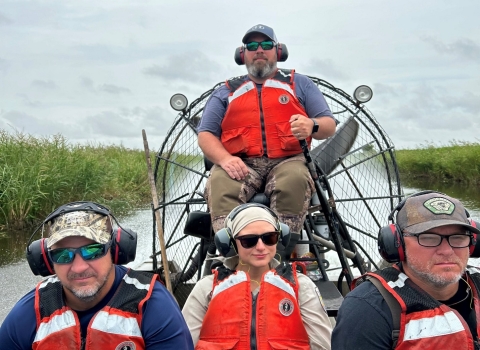Maintenance Worker, Adam Yarberry, and Biological Science Technician, Makenzie Foster, traveled to Lake Barkley to assist KDFWR, USGS, USFWS, and TVA with capturing, tagging, and releasing invasive carp.
Electrofishing boats and a 1200 foot gillnet were used to collect the carp before surgically inserting vemcos tags. Yarberry and Foster specifically assisted with netting shocked fish, setting and pulling in the gillnet, and transferring the fish from the capture boat to the tagging boat.
These efforts will provide crucial data on the effectiveness of the B.A.F.F. (Bio Acoustic Fish Fence) system installed in 2019. The B.A.F.F. system uses a mixture of lights, vibrations, and bubbles to deter the invasive species invasive species
An invasive species is any plant or animal that has spread or been introduced into a new area where they are, or could, cause harm to the environment, economy, or human, animal, or plant health. Their unwelcome presence can destroy ecosystems and cost millions of dollars.
Learn more about invasive species from entering other waterways. Biologists are specifically looking at how many invasive carp are able to pass through the system into the tailwaters of the Cumberland River.








